-
Latin America
Latin America
- Countries (hidden space)
- Galapagos & Ecuador
- Guatemala
- Mexico
- Panama
- Peru
- Popular Attractions
- Machu Picchu
- Inca Trail
- Easter Island
- Galapagos Islands
- Patagonia
- Rio de Janeiro
- Iguazu Falls
-
Africa
Africa
- Spacer Africa
- South Africa
- Zimbabwe
- Popular Attractions
- Cape Town
- Okavango Delta
- Sossusvlei Dunes
- Victoria Falls
- The Kruger
- The Garden Route
- Masai Mara
-
Asia & Middle East
Asia & Middle East
- Asia
- Borneo (Malaysia)
- Cambodia
- India
- Japan
- Middle East
- Jordan
- Spacer Asia
- Laos
- Sri Lanka
- Uzbekistan
- Vietnam
- Popular Attractions
- Taj Mahal
- Lion Rock (Sigiriya)
- Angkor Wat
- Ha Long Bay
- Kyoto
- Petra
-
Destinations
- Latin America
- Argentina
- Bolivia
- Brazil
- Chile
- Colombia
- Costa Rica
- Galapagos & Ecuador
- Guatemala
- Mexico
- Panama
- Peru
- Asia
- Borneo (Malaysia)
- Cambodia
- India
- Japan
- Laos
- Sri Lanka
- Uzbekistan
- Vietnam
- Middle East
- Jordan
- Southern & East Africa
- Botswana
- Kenya
- Namibia
- South Africa
- Zimbabwe
- Contact Us
-
About
About
Llama Travel provides high quality holidays at the lowest possible prices.
99% recommend us Lower prices - guaranteed Financially protected by ATOL
The Llama Travel Blog
An Animal Checklist for Costa Rica
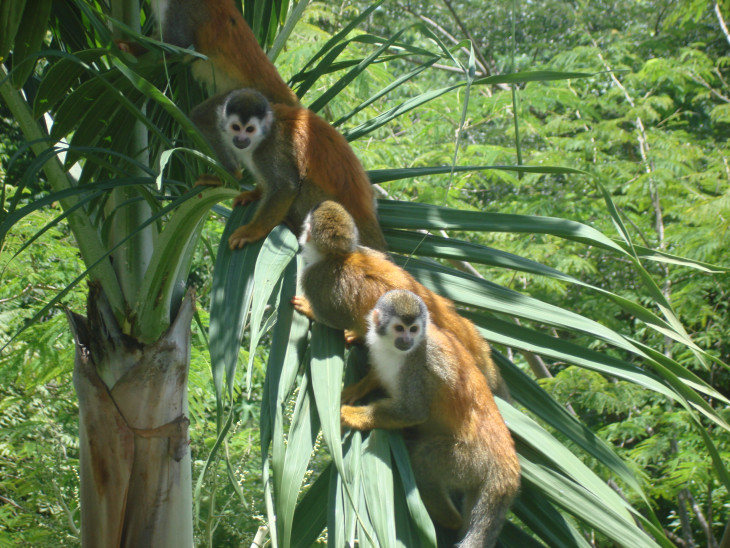
Despite being almost five times smaller than the UK, Costa Rica hosts an astonishing 4% of the planet’s diversity. From sloths and four types of monkeys on the Pacific coastline to caimans and sea turtles on the Caribbean side, the country is brimming with wildlife. Not to mention the 890+ species of birds found in the cloud forests and jungles. If you’re planning a trip to Costa Rica, keep reading to find out what you might spot.
Sloth
One of the most popular animals among people going on holiday to Latin America is the sloth. These slow-moving mammals are on nearly every wildlife enthusiast’s bucket list. In Costa Rica, both varieties (two-toed and three-toed) can be found. Sloths can be seen all year-round in many of Costa Rica’s national parks including Manuel Antonio, Corcovado, Tortuguero and in the cloud forest. Sloths sleep an average of 14-18 hours per day, so it is most common to see them as tucked into the crooks of tree branches, often only spotted with the help of an experienced naturalist guide.
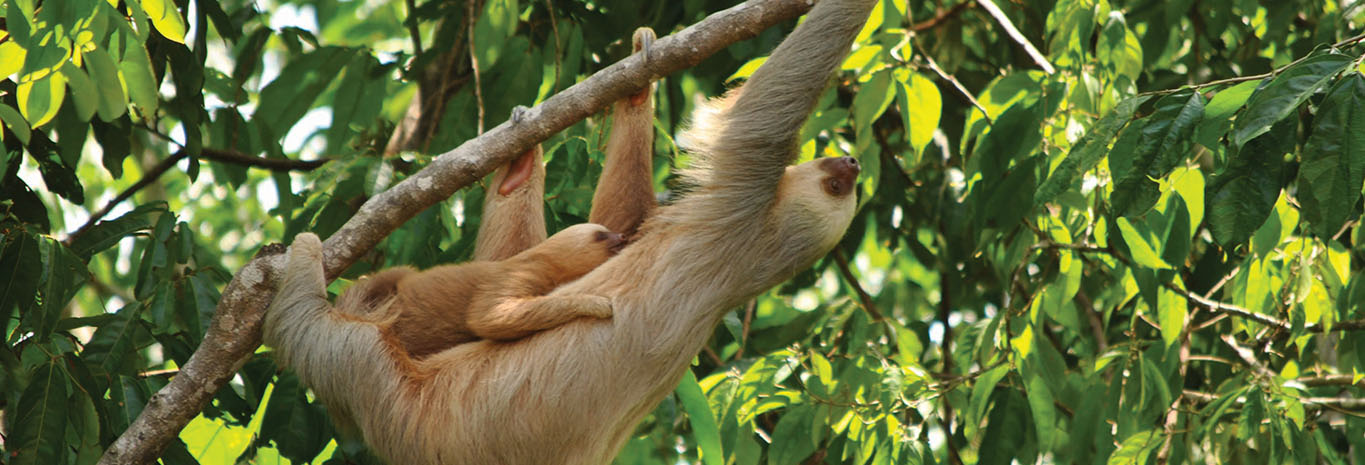
Where to see them
Manuel Antonio National Park, Corcovado National Park, Cloud Forest and Tortuguero
Toucan
The birds of Costa Rica are one of the country’s main attractions. One of the most easily recognisable birds in Latin America, toucans are considered by some to be the symbol of Costa Rica. Six of the 42 toucan species can be found in the lowlands and rainforests of Costa Rica: keel-billed, chestnut-mandibled, emerald toucanet, yellow-eared toucanet, collared aracari and the fiery-billed aracari. The Keel-Billed Toucan has a brightly coloured yellow neck and a multitude of green, blue, orange, and red on its beak, while the Chesnut-Mandibled Toucan’s beak is bright yellow and deep red. Fortunately, the populations are not yet seriously threatened.
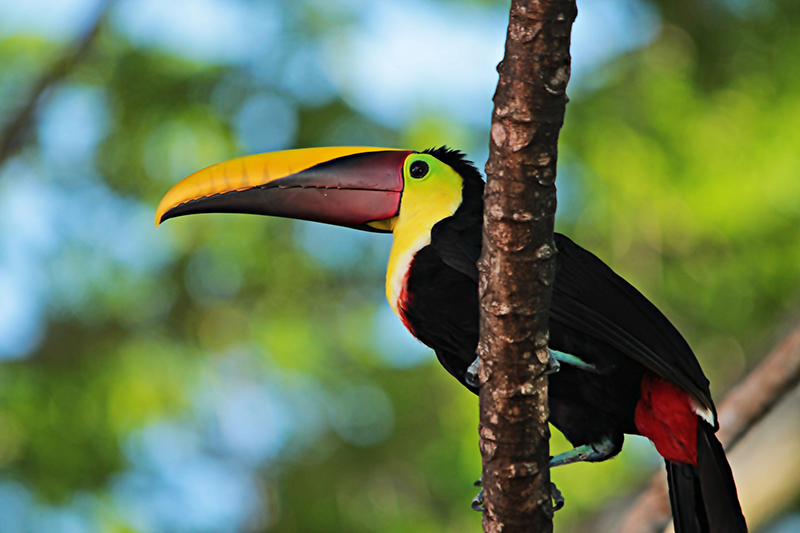
Where to see them
Tortuguero, Manuel Antonio National Park, Arenal Volcano National Park
Coatimundi (Coati)
Commonly mistaken for a raccoon due to their curious nature and long snout, coatimundis are found in the USA as well as various regions of Central and South America. They can survive in a diverse range of habitats and can be seen throughout Costa Rica, particularly in and around Manuel Antonio National Park.
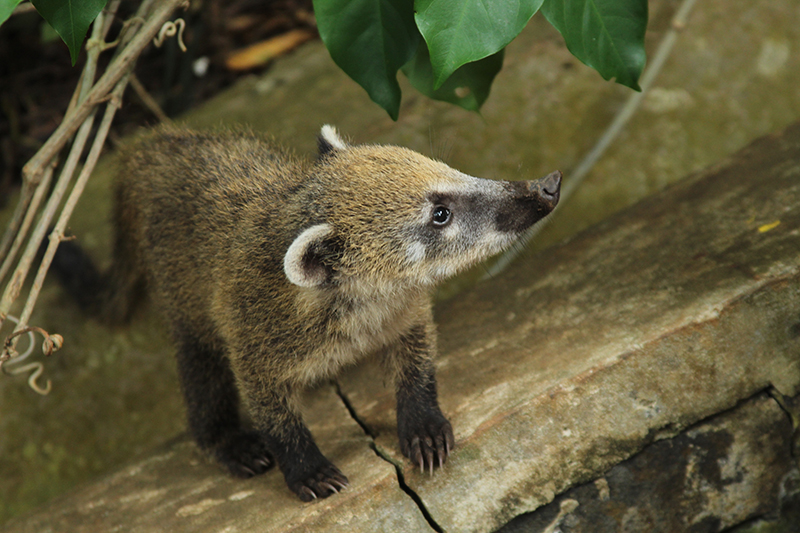
Where to see them
Manuel Antonio National Park, Arenal Volcano National Park
Hummingbird
Named after the sound that their tiny beating wings make, hummingbirds are brightly-coloured and energetic birds that live in Costa Rica’s cloud forests. There are over 300 known species, 50 of which can be found in Costa Rica.
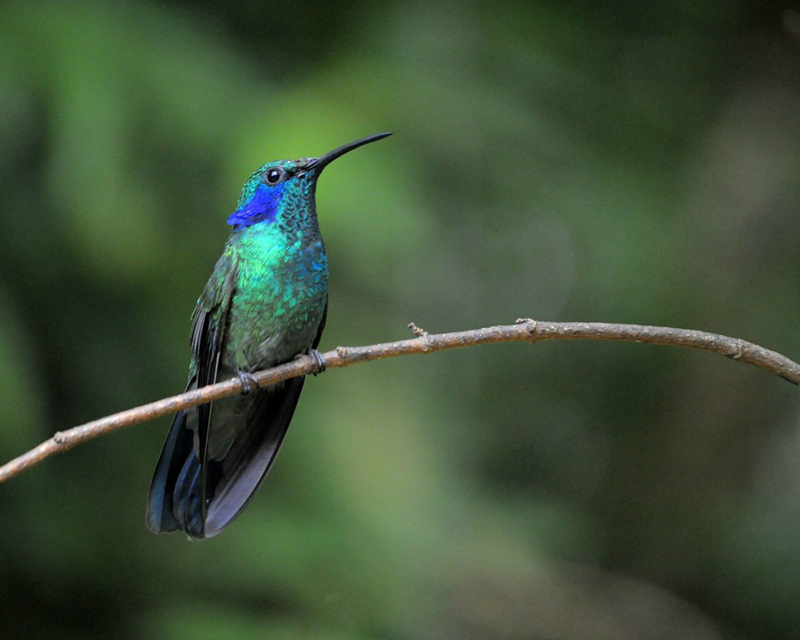
Where to see them
Cloud Forest
Monkey
There are four different species of monkey in Costa Rica: howler, spider, capuchin and squirrel. These guys tend to stick together, so if you see one, you're likely to spot the whole gang! While most animals have to be carefully sought out by an experienced naturalist guide, monkeys tend to be more curious and make more noise in the treetops above you, so spotting them is less of a mission. Spider monkeys are among the most commonly spotted, making an eerie screaming noise around other monkey species. Be prepared to be woken up by the distinctive sounds of the howler monkey, too. Known locally as the mono titi, the squirrel monkey is Central America’s most endangered monkey, and chances of spotting one are rare. Capuchins are sociable creatures, mostly found around Manuel Antonio. Scroll through our blog to see the many faces of Costa Rica's capuchin monkeys.
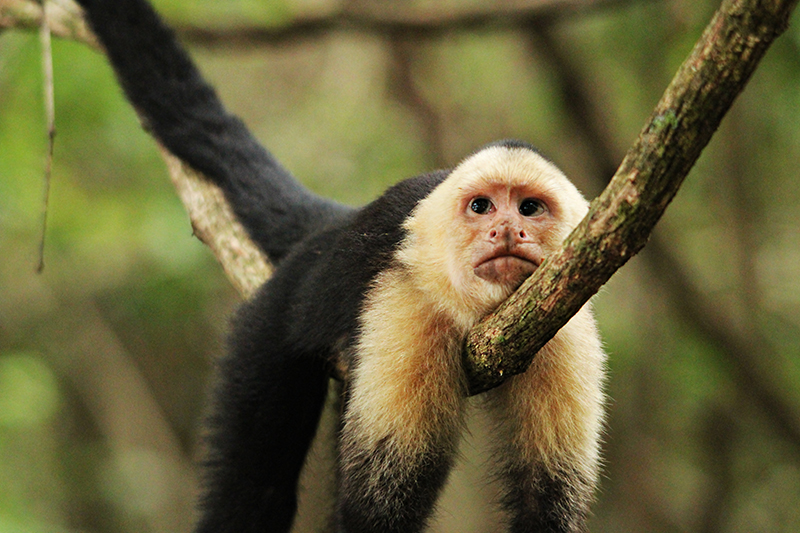
Where to see them
Corcovado National Park, Manuel Antonio National Park, Arenal Volcano National Park, Cloud Forest
Scarlet Macaw
The largest population in Central America of these vibrant birds can be found in Corcovado National Park, one of the most biodiverse regions of Costa Rica. Macaws are the largest parrots in the world, and the scarlet ones grow up to 36 inches from beak to tail. They tend to fly in pairs or small families, reaching speeds up to 35mph.
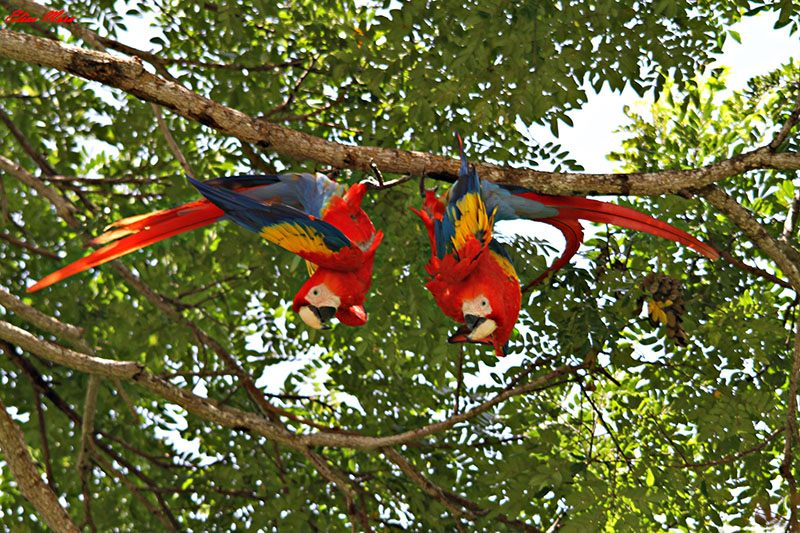
Where to see them
Manuel Antonio National Park, Corcovado National Park
Tree Frog
Often thought of as Costa Rica's mascot, the tree frog comes in many species, with the most famous being the red-eyed tree frog. Despite being such vibrant colours, the size of the tree frogs makes them difficult to spot, as they tend to hide under leaves in humid forests. The tiny blue jeans poison dart frog, also known as the strawberry poison arrow frog, is one of Costa Rica’s most colourful and iconic amphibians. The frog’s bright colours are a warning to potential predators that cannot digest their toxins. The brightly-coloured red-eyed tree frog has a lime green body flanked with blue and yellow stripes. If disturbed by predators, the frogs open their large red eyes and expose their brilliant orange feet.
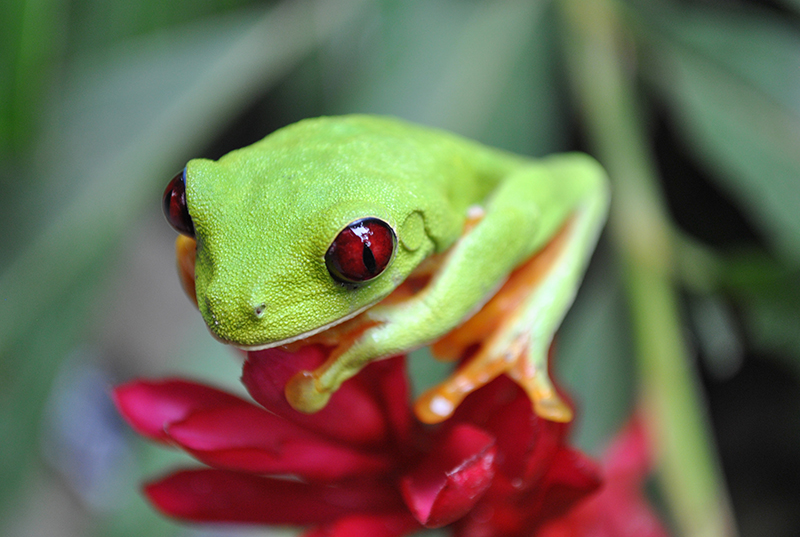
Where to see them
Manuel Antonio National Park, Villa Blanca Cloud Forest
Iguana
Although many people go on holiday to Costa Rica in the hope of seeing turtles lay their eggs on the beach, there are numerous other reptiles to be spotted, including iguanas. The largest lizard species in Central America, the green iguana can reach six feet in length and is known for its long tail that accounts for more than half its total length. They tend to live in the forest canopy, but often climb down from the treetops in search of warmth during wet weather.
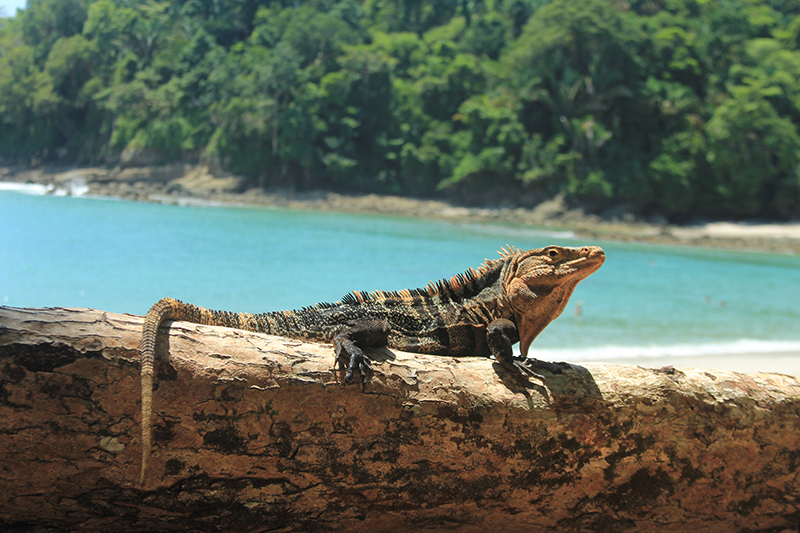
Where to see them
Manuel Antonio National Park, Arenal Volcano National Park, Tortuguero
Caiman
Often mistaken for floating tree trunks, caimans can be found throughout Costa Rica’s lowland rivers and wetlands, although they can survive in a variety of habitats. The common caiman can change colour, switching from green to black during cooler periods.
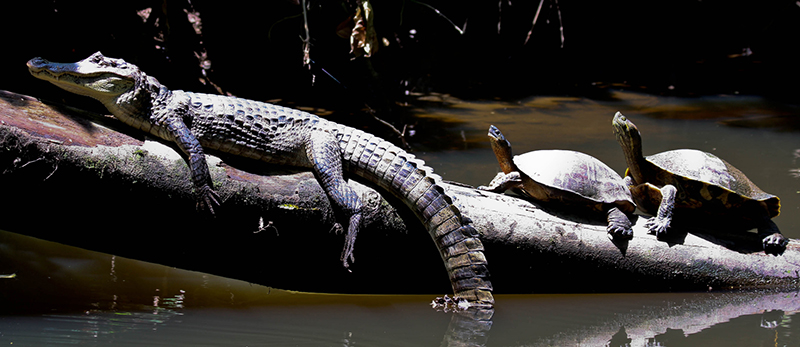
Where to see them
Tortuguero, Arenal Volcano National Park, Corcovado National Park
Tapir
Less than 5,500 Baird’s tapirs are left on earth – with around 1,000 residing in Costa Rica. Native to Central America, the tapir is the largest land mammal in the area, growing to an average length of two metres. They communicate by whistling, snorting and stamping. Despite residing around Corcovado National Park, the likelihood of spotting one is rare, as the tapir is sadly on the brink of extinction.
Where to see them
Corcovado National Park
Sea Turtle
A highlight for many people’s holidays to Costa Rica is seeing sea turtles hatch their eggs on the beach. Tortuguero, located in the northern Caribbean, is one of the world's most important nesting sites for sea turtles (leatherback and hawksbill), hosting approximately 22,500 females per season. Evening turtle tours are very environmentally friendly, ensuring that the turtles are not interrupted during the nesting process. Several species of turtles return every year to the exact same beaches along both coasts to nest in a grand procession called an arribada.
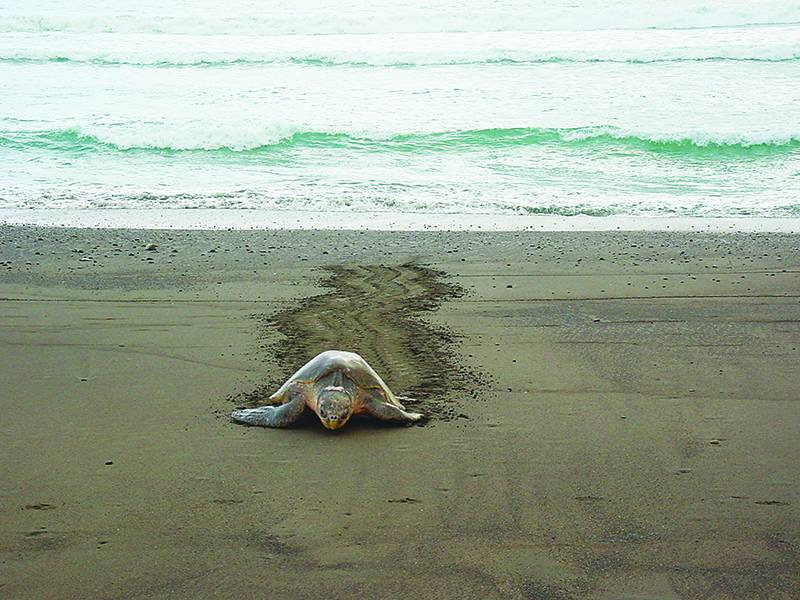
Where to see them
Tortuguero
Butterfly
Costa Rica is a butterfly haven, containing more butterfly species than the whole of Africa! One of Costa Rica's most beautiful butterfly species is the giant blue morpho butterfly. You will find these beautiful creatures throughout the country’s many microclimates and habitats. For a closer look, head to one of Costa Rica’s many butterfly gardens, which offer tours and personal interaction with numerous species.
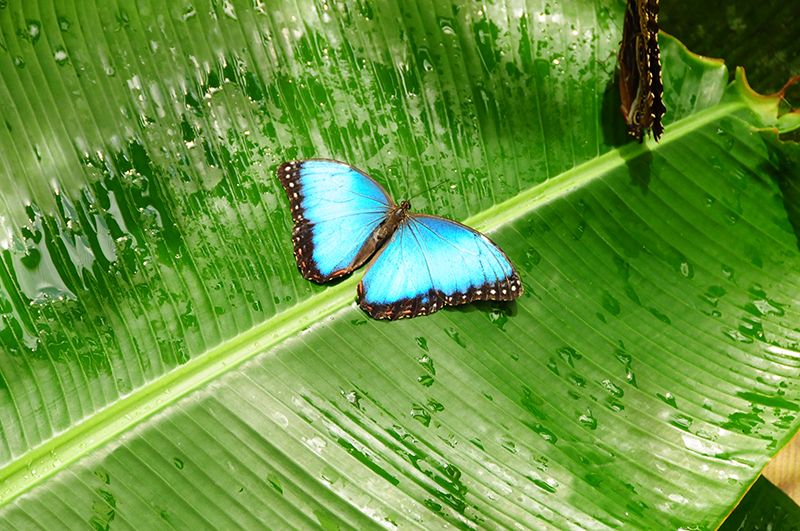
Where to see them
La Paz waterfalls, Cloud Forest
Quetzal
Often referred to as the most spectacular bird in the New World, the resplendent quetzal is a brightly coloured bird that lives in the tropical forest. They are known for their vibrant plumage, with a green body and vibrant red breast making it an easy species to identify, particularly during the mating season when the males display twin tail feathers.
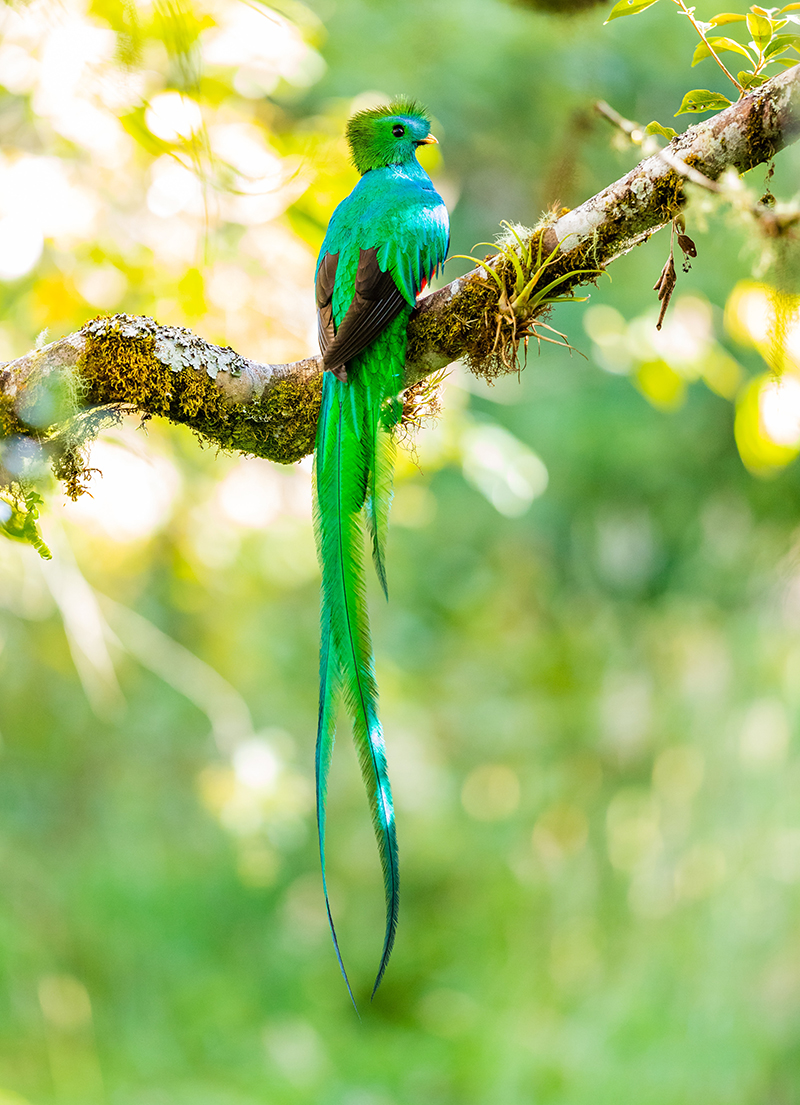
Where to see them
Cloud Forest
You can view all of our Costa Rica Holidays here. To find out more about the animals in Costa Rica, call us on 020 7263 3000 or email us on This email address is being protected from spambots. You need JavaScript enabled to view it. to speak to someone who’s been.
Found this blog useful? Sign up to our newsletter for more holiday tips and advice!
